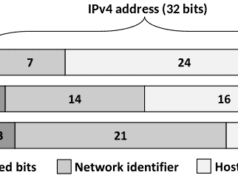Linear drive systems use mechanical devices, such as gears or pulleys, to transmit rotary motion from an electric motor along a straight or curved guide to produce linear thrust on the load at one end of the device. They have become essential in several industrial and agricultural applications in the past few years, such as the basic automation of railway level crossings and machinery for straightening rolled steel. With the increasing use of the internet and the web, linear systems are also widely used in small-scale automation of gardening and other household tasks.
The Types of Linear Systems
There are three types of linear systems that you can use: Screw, wheel, and belt. Each type has its characteristics and usage.
Screw drive: If a screw is turned into a piece of wood, it will go straight through the wood and leave a visible mark on the other side. The same is true for screw drives. It is mainly used for the transfer of motion in machines where limiting factors such as the rotational speed of the shaft or torque generated per revolution are more important than turning accuracy.
Wheel drive: The wheel, mainly made of rubber, rolls against a flat surface, generating linear motion. It transfers motion in machines with high speed and torque requirements. A cage system is used to transfer the linear movement of the wheel to the load.
Belt drive: The belt is mainly rubber and has a lamellar structure. It can transmit large amounts of power while maintaining more flexibility compared to other linear systems. It is mainly used to transfer considerable power over long distances and in machines with high-speed rotation requirements.
Basic Characteristics of Linear System
Linear drive systems are driven by two electric motors: AC motors, DC motors, and servo motors. The driving force generated by the motor is transformed into mechanical motion with the help of an efficient transmission mechanism. The type of linear system ultimately depends on the characteristics required for the application that needs to be completed. Therefore, it is important to understand the essential features of a linear system.
Gears
The first setting that needs to be determined when using a linear system is whether a rack or gears will be used along the guide. Several factors to consider when choosing the transmission mechanism, including shaft speed or rotation rate. The gear ratio depends on the transmission distance, load, and shaft speed.
1. Motor Rating
Motor ratings refer to the maximum power delivered to the linear system. A large linear system requires more powerful motors to transmit higher power to the load. It is important to take into account the characteristics of the motor and drive system when selecting a motor rating. Higher torque and speed can be achieved with a higher power rating, but transmission problems may occur at different speeds. Servomotors are rated in terms of maximum continuous power instead of torque. The rated power is the output at which a servomotor performs 100% of its rated capability.
2. Limit Switch
The limit switch is an essential component in the transmission mechanism and controls the amount of power transferred to the load through the guide. It can be installed on either the gear or the gear shaft. The limit switch enables you to adjust the transmission speed in response to changes in loading. Different limit switches are used for other applications; you should check their characteristics before installation.
The Bottom Line
Linear systems have become an essential part of several worldwide machines. You must have an understanding of the basics to use them effectively. Linear transmissions are used for many purposes, such as industrial automation and agricultural machinery. The ability of This system to transmit power in a straight line makes it an ideal candidate for many types of machinery. The right type of transmission mechanism is needed for the correct application, and you must understand the basics to apply this system effectively.
Featured Photo by Pixabay: https://www.pexels.com/




